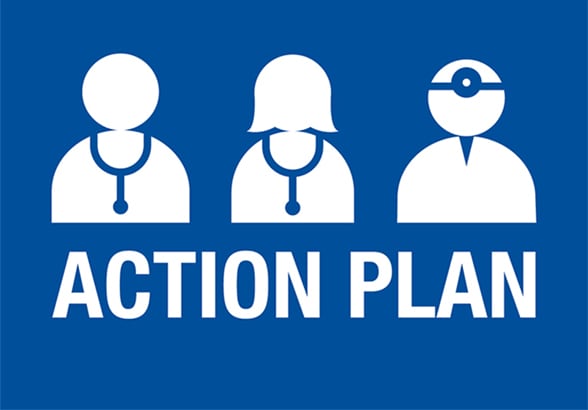Aug. 22, 2018
 Action planning involves all of the trauma stakeholders who would add value to the project.
Action planning involves all of the trauma stakeholders who would add value to the project.
During 2018, this newsletter will feature the performance improvement (PI) process, including event identification, levels of review, action planning and event resolution.
Action planning
What's the No. 1 pitfall to avoid after your trauma program identifies an opportunity for improvement and reviews the event? Inaction. What's the antidote? Action planning: determining and implementing needed processes and procedures to prevent event recurrence.
What might interfere with action planning? Though many factors may hamper action planning, time is the most critical, as trauma providers often have overfull days. Lack of resources, especially personnel to help plan, or inadequate support for trauma center practices, also may be barriers, along with variable levels of physician engagement.
To improve future care, however, action planning is imperative. Without action planning, all PI activities already completed may come to naught, with no changes to ensure a similar event doesn't recur.
SMART
According to Terri A. Elsbernd, R.N., pediatric trauma coordinator at Mayo Clinic Trauma Center, to make action planning — which can be done after any level of review — efficient and effective, the SMART acronym provides a useful guide:
Specific
Action plans must be specific to the event where potential or actual harm occurred. For example, if the trauma coordinator identifies the Glasgow Coma Score (GCS) is undocumented, a nonspecific action plan might involve working with ED nurses to improve general documentation. Conversely, forming an ED nurse work group to identify barriers to GCS documentation constitutes a specific action plan.
Measurable
Without the ability to measure, there is no way to determine if action planning has achieved its goal. Measurement implies goal documentation, perhaps including a tracking plan, and is important for trauma center site visit review. In the ED nurses scenario, after the work group convenes, it would set a goal, such as 90 percent GCS documentation after three months.
Attainable
Attainable action planning recognizes human imperfection and inherent error risk. Thus, planning should not include goals such as 100 percent GCS documentation. Failure risk is too high, leading to discouragement. Notably, the American College of Surgeons (ACS) sets action planning goals in the 80 percent range.
Realistic or Relationships
Realistic action planning is similar to attainable planning. The SMART acronym's R also stands for relationships, as most trauma program action planning is not done in isolation and involves other stakeholders. In the ED nursing example, if trauma center leadership created an action plan for GCS documentation without involving ED leadership, the plan would likely fail and potentially affect relationships with liaisons.
Timely
Timeliness and deadlines are crucial to action planning. Establishing some short-term goals can make them more attainable. Also, assigning deadlines to stakeholders involved in the action planning process helps to keep the process moving. However, appropriate time frame also depends on the issues involved, thus some action plans involve long-term goals and span several months.
Additional keys to effective action planning
Strong leadership, involvement of the right people, effective education, appropriate education and careful counseling are also important elements of effective action planning.
Strong leadership
A trauma coordinator or program manager, or the trauma medical director, may lead action planning. This individual needs to take an active role in driving the plan forward and do whatever is needed to ensure plan execution.
Involving the right people
Make sure all of the trauma stakeholders who would add value to the project are included, not forgetting that involving bedside staff nurses can be very helpful.
Effective communication
New guidelines resulting from action plans need to be communicated to all those affected. For example, it would not suffice to add practice management guidelines to a website if no one knows about them.
Appropriate education
Often action planning includes an education component, which is important to prevent repeating the event involved. For example, if timelines for administering open fracture antibiotics aren't followed, provider education is warranted. In addition, if a practice guideline related to antibiotics for open fractures was drafted as part of the PI process, remember to provide education to all stakeholders.
Careful counseling
In order to resolve some events, action plans may have to include counseling for specific individuals. As this can be tricky, a program embracing a culture of safety is key: nonblaming and geared toward improving patient care. To be effective, counseling needs to be carried out face-to-face and peer-to-peer, such as a physician counseling another physician about an issue.
If a trauma program needs resources to guide its action planning or PI process, Elsbernd encourages reaching out to the Level I or II trauma center to which it refers patients, or its regional trauma advisory committee.
"Don't reinvent the wheel," she says. "Likely, another trauma program has dealt with a similar issue and would be happy to help."
For more information
Trauma Coordinator Orientation Manual for Level IV Trauma Centers. Southern Minnesota Regional Trauma Advisory Committee.